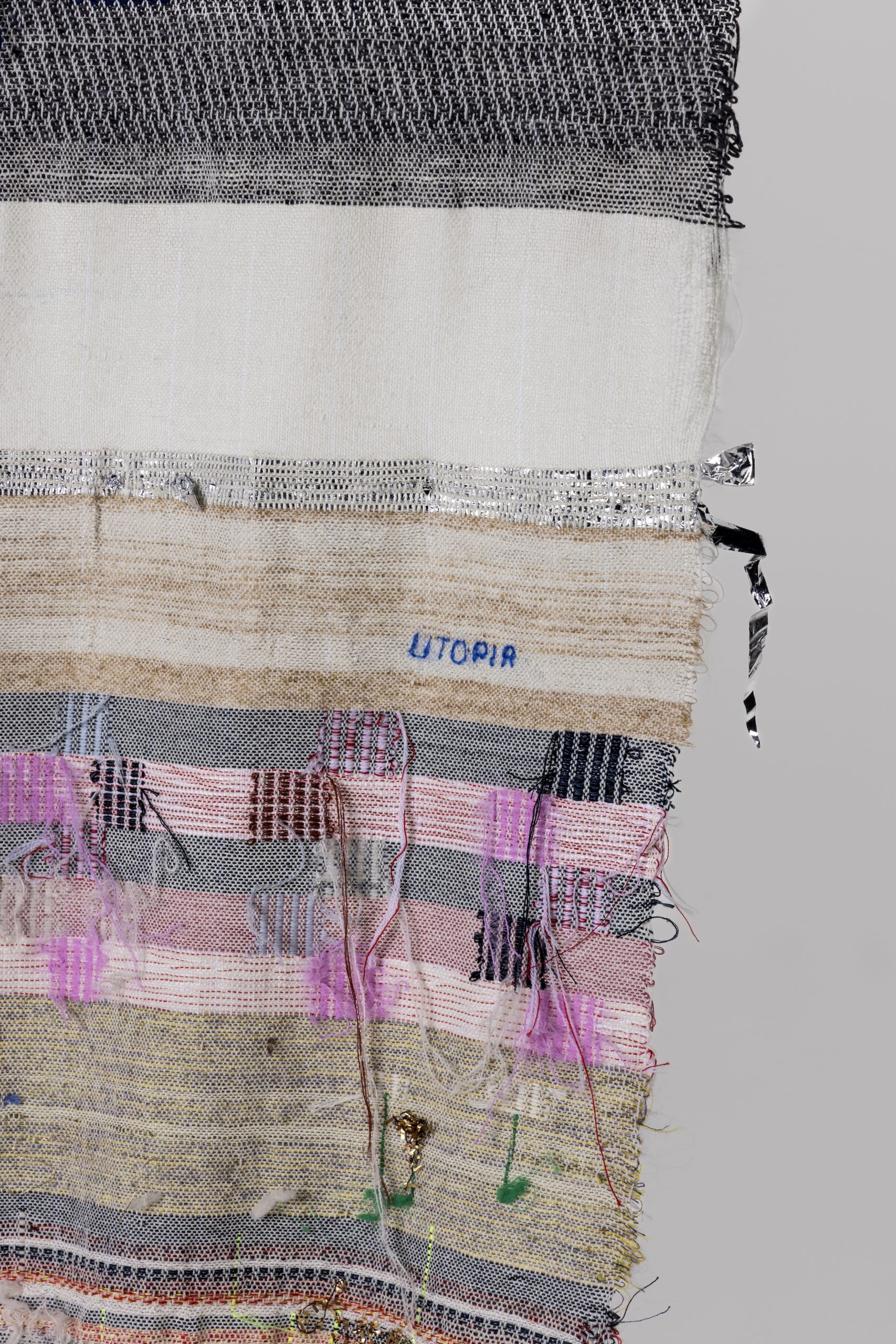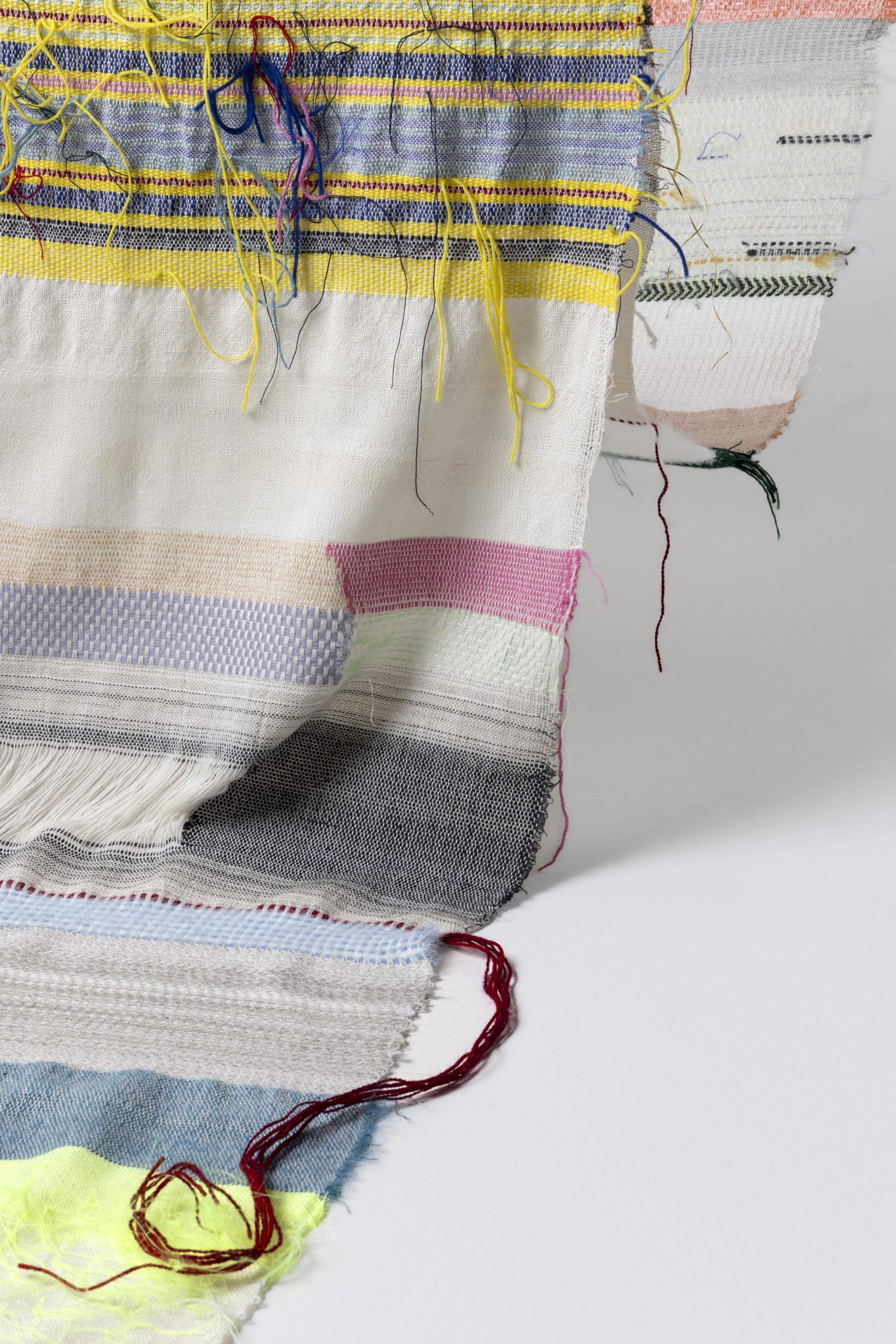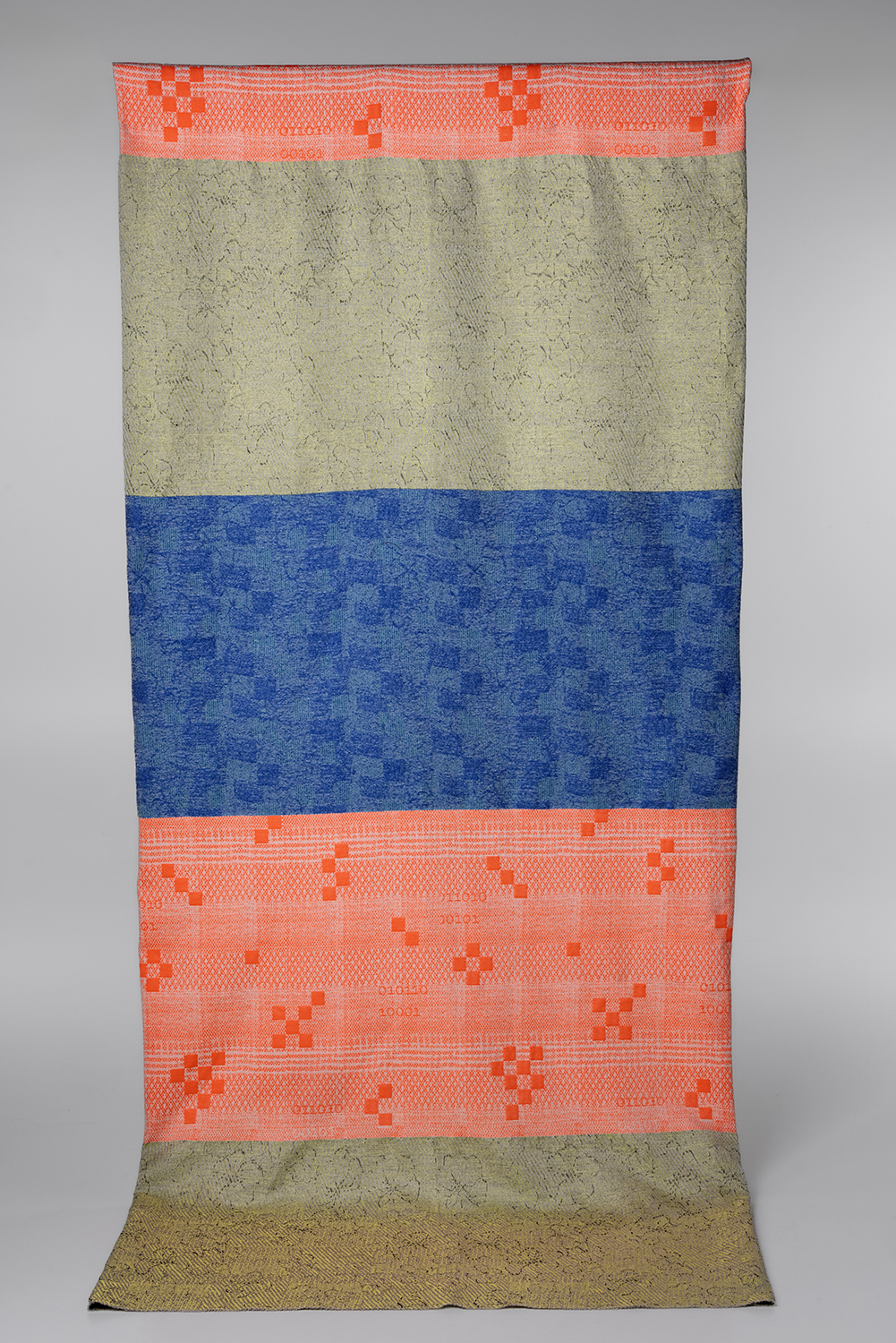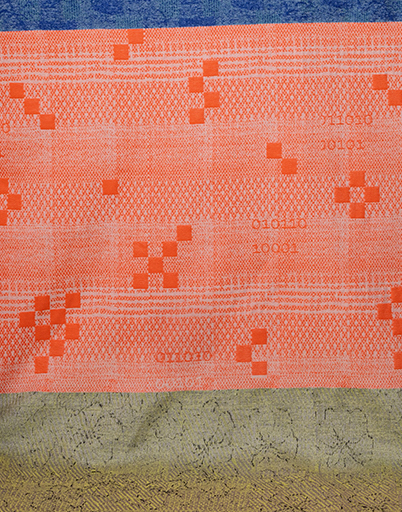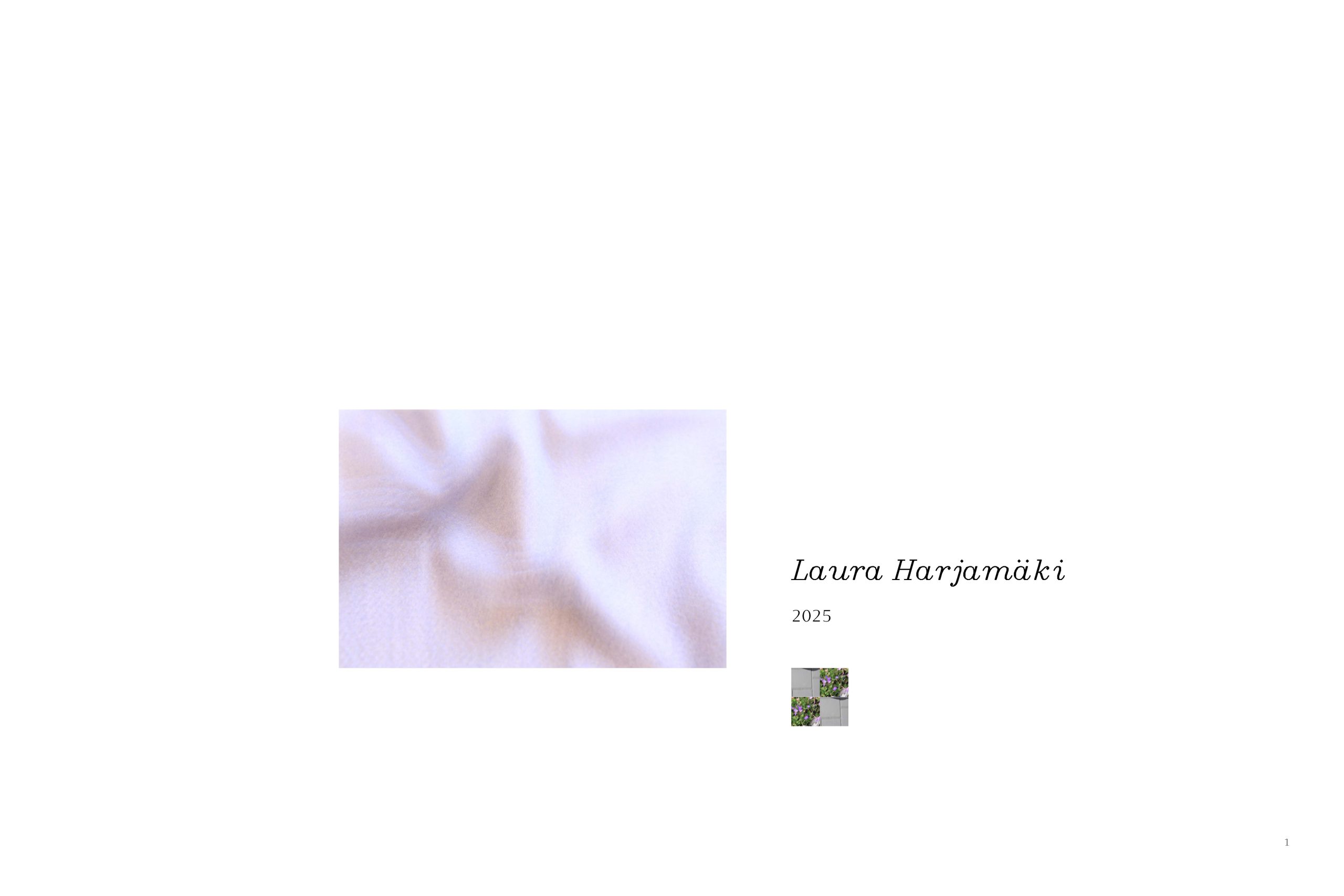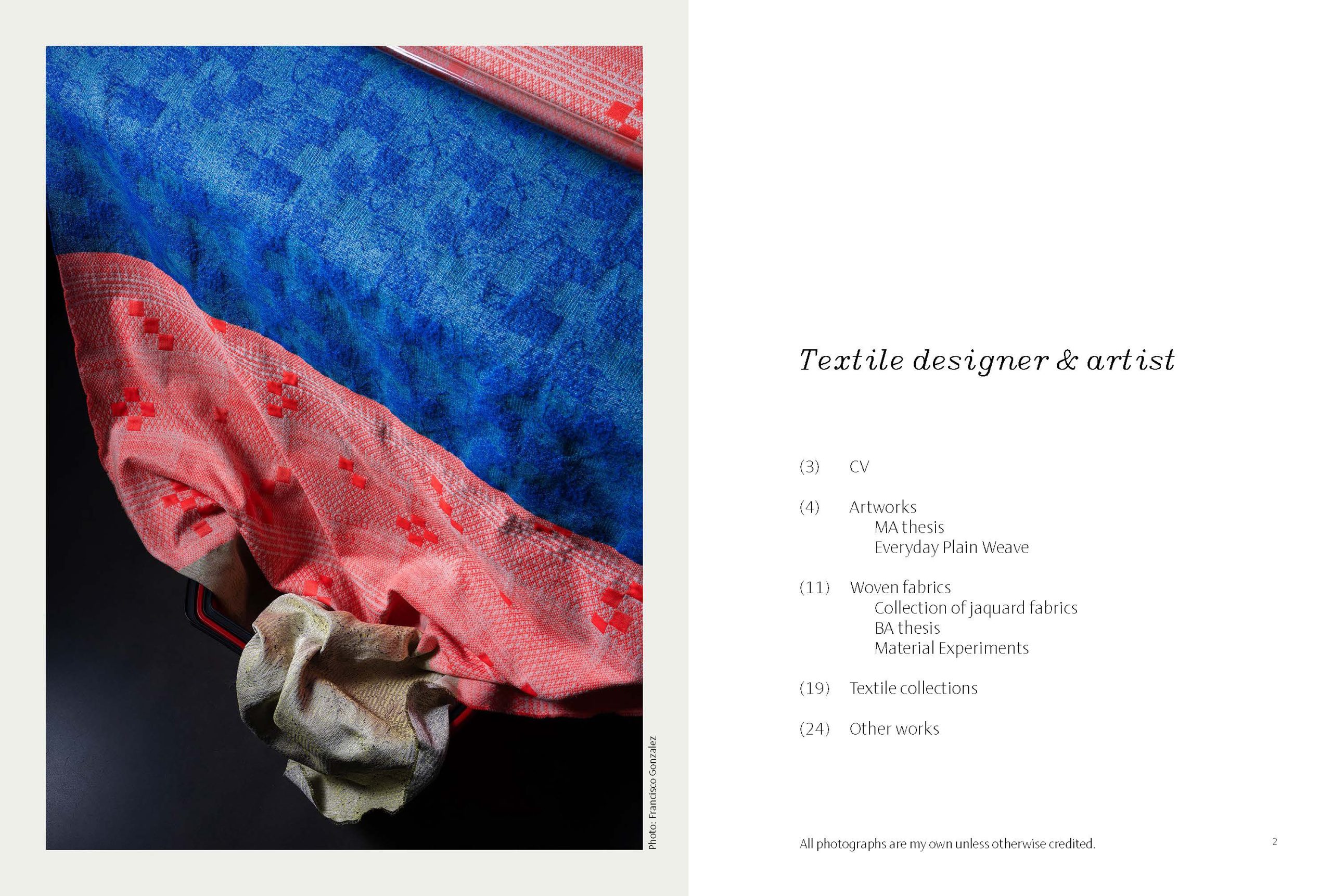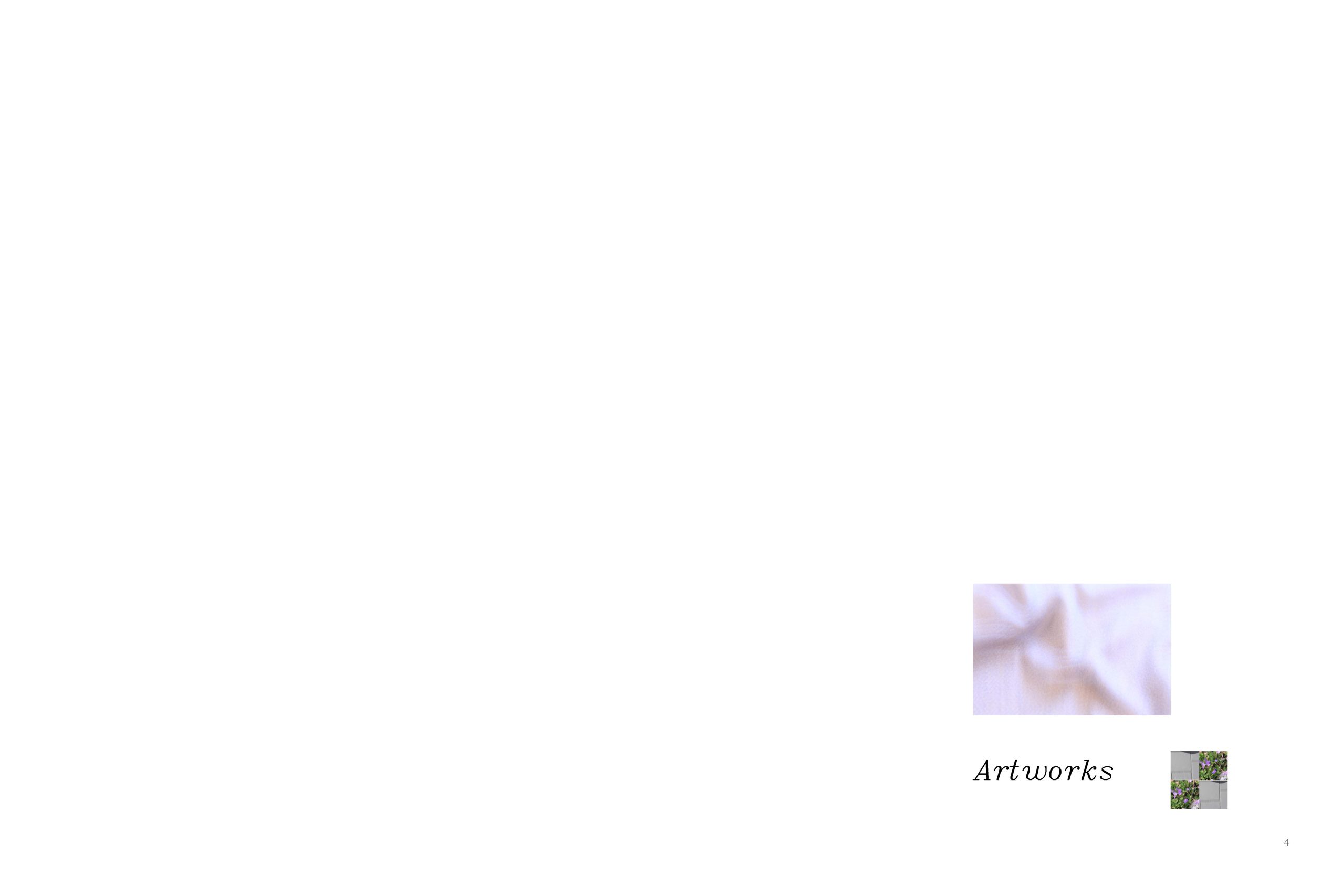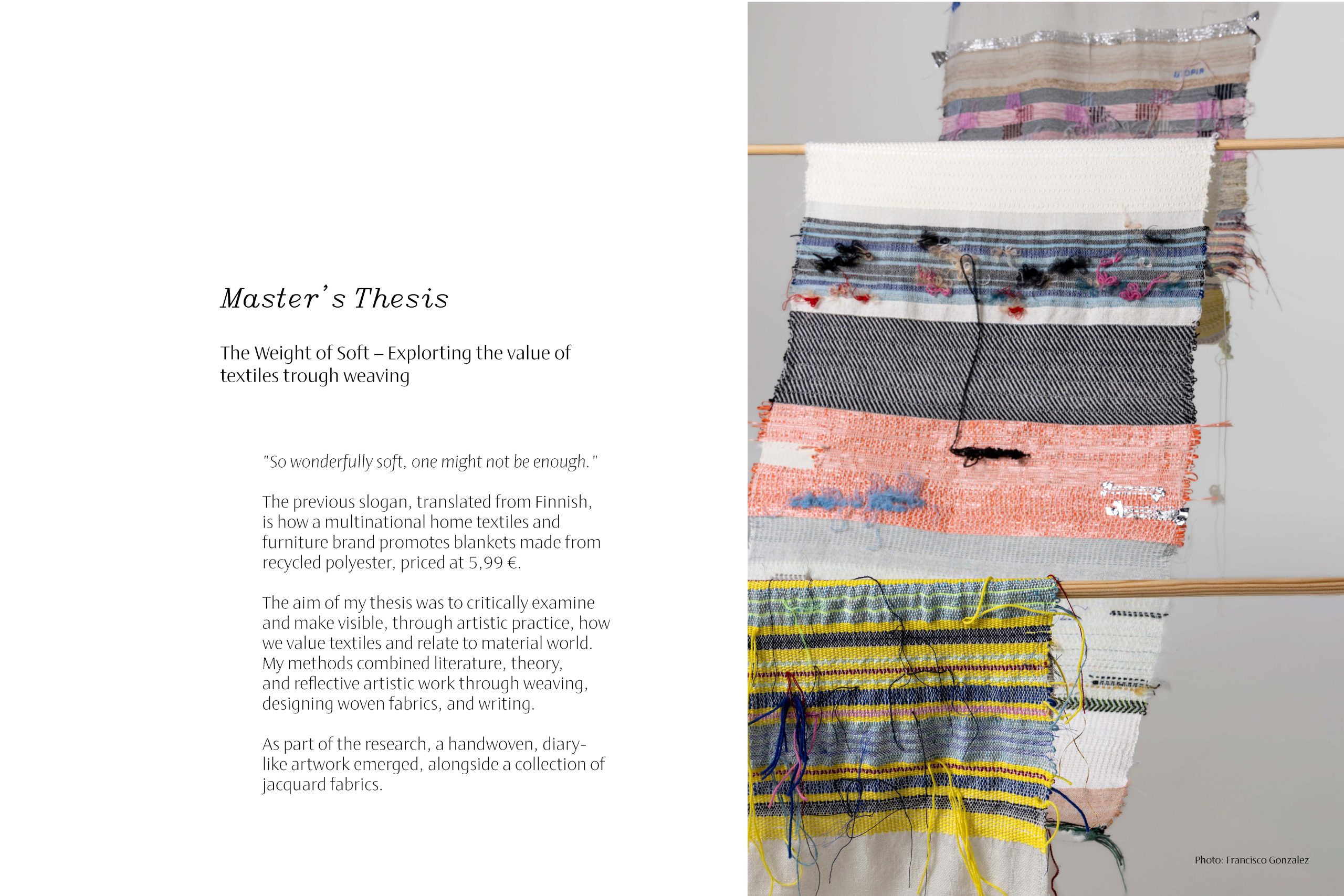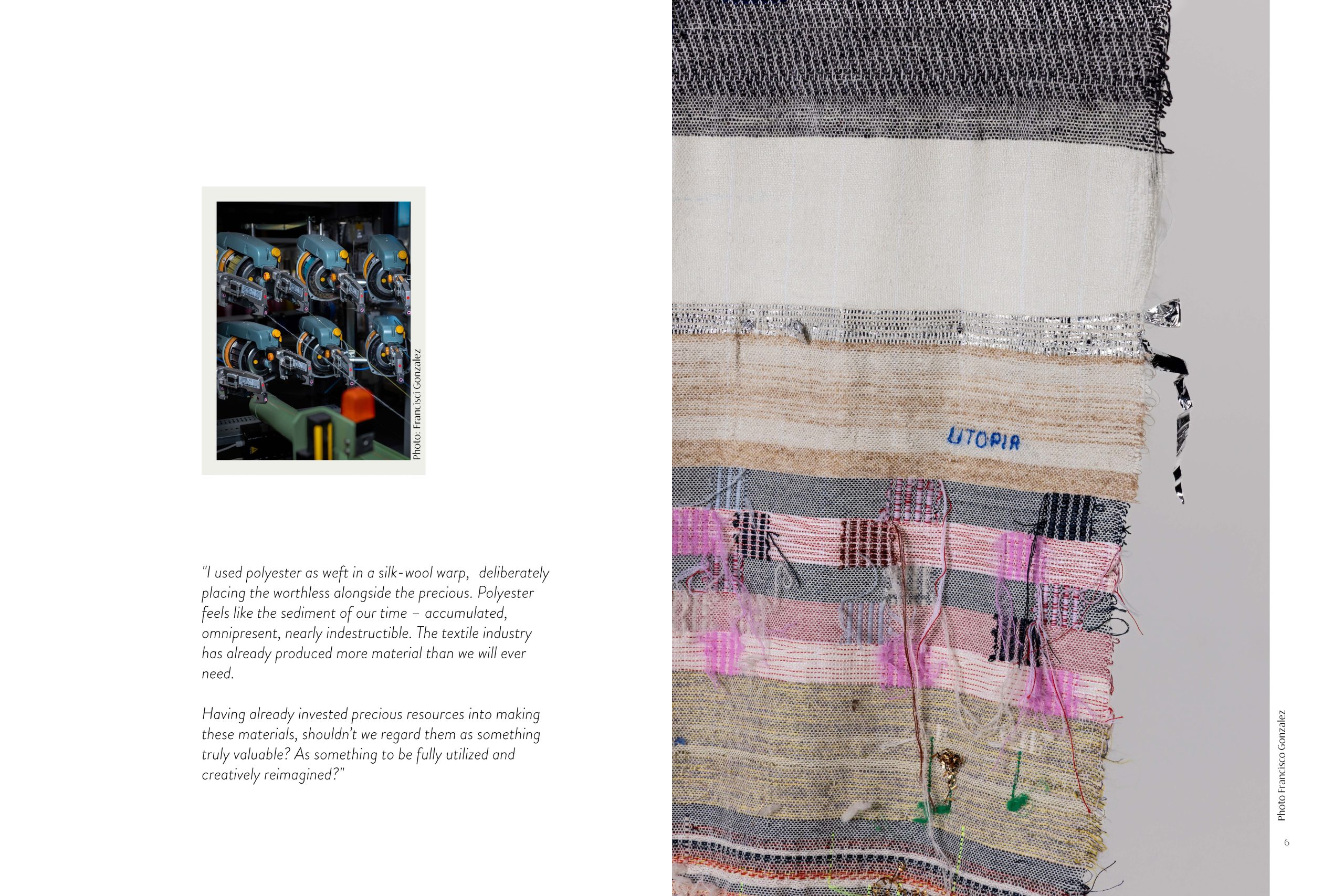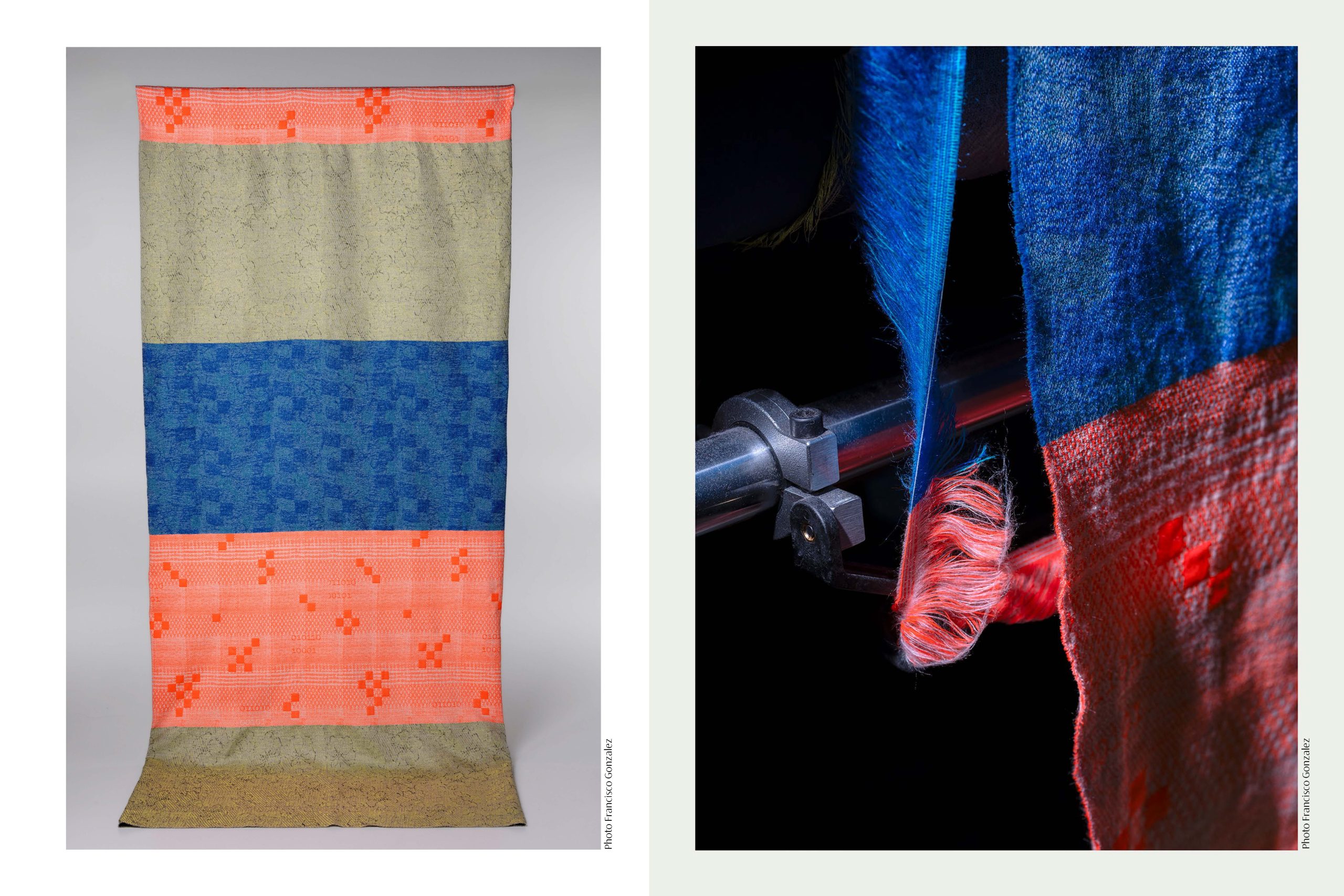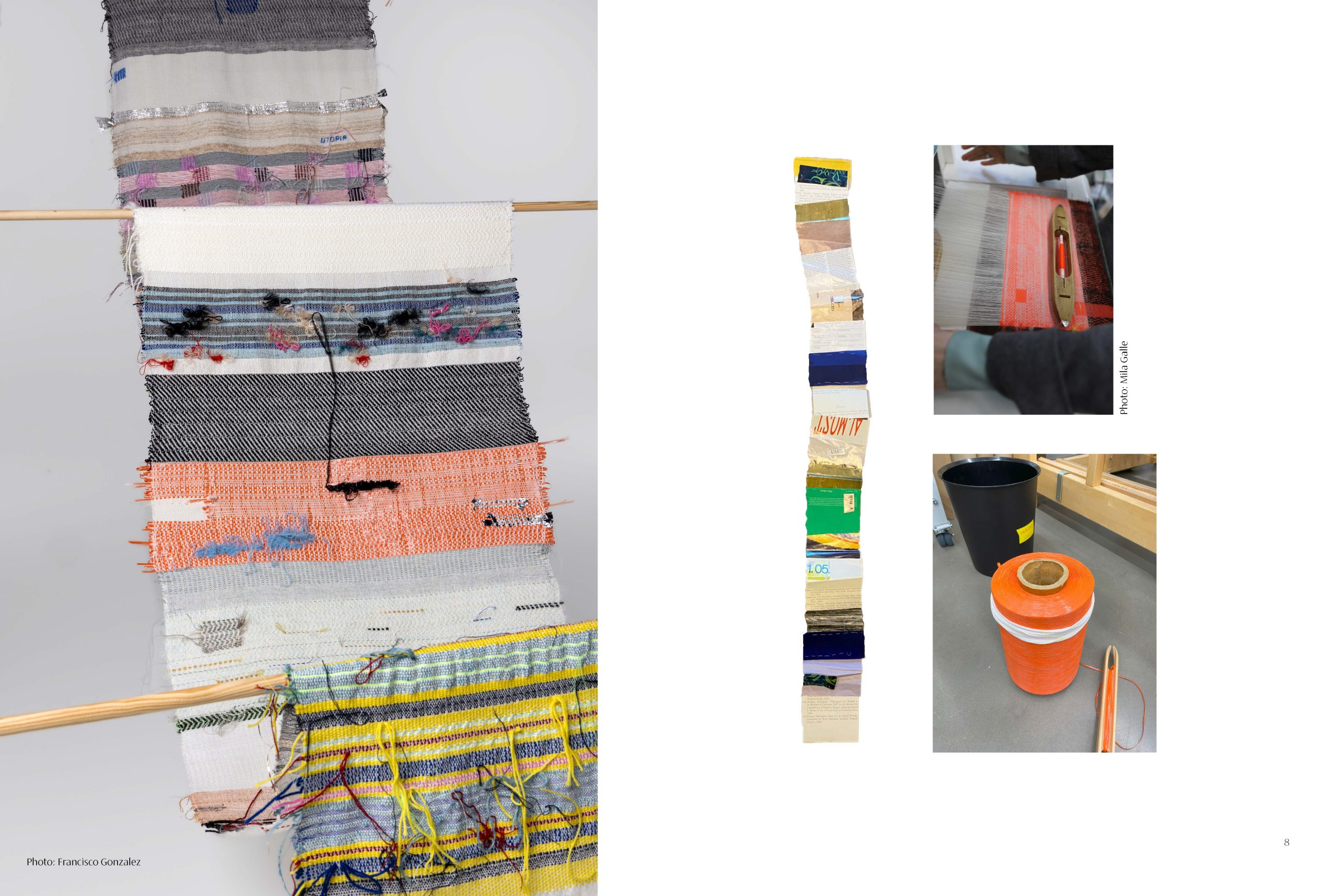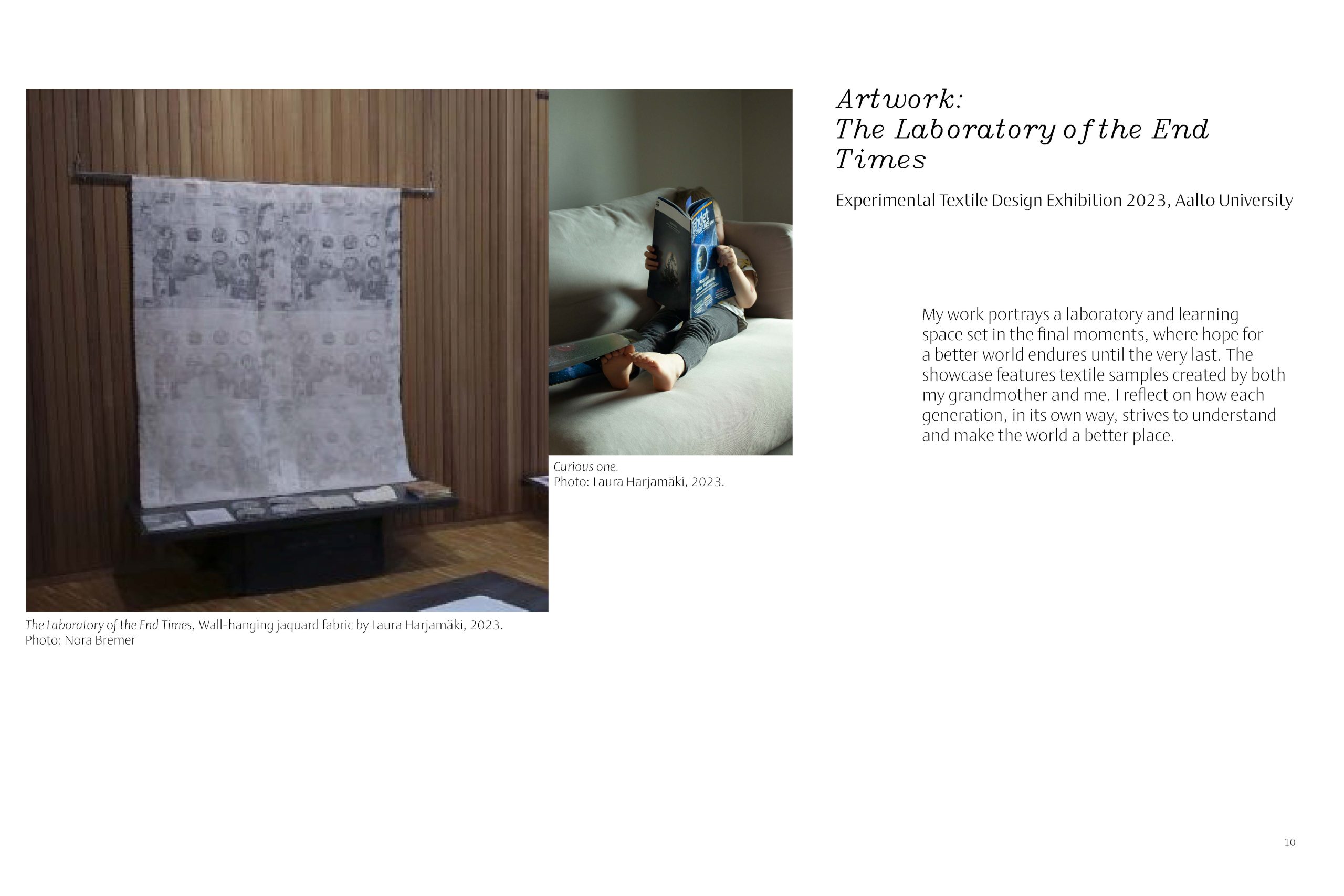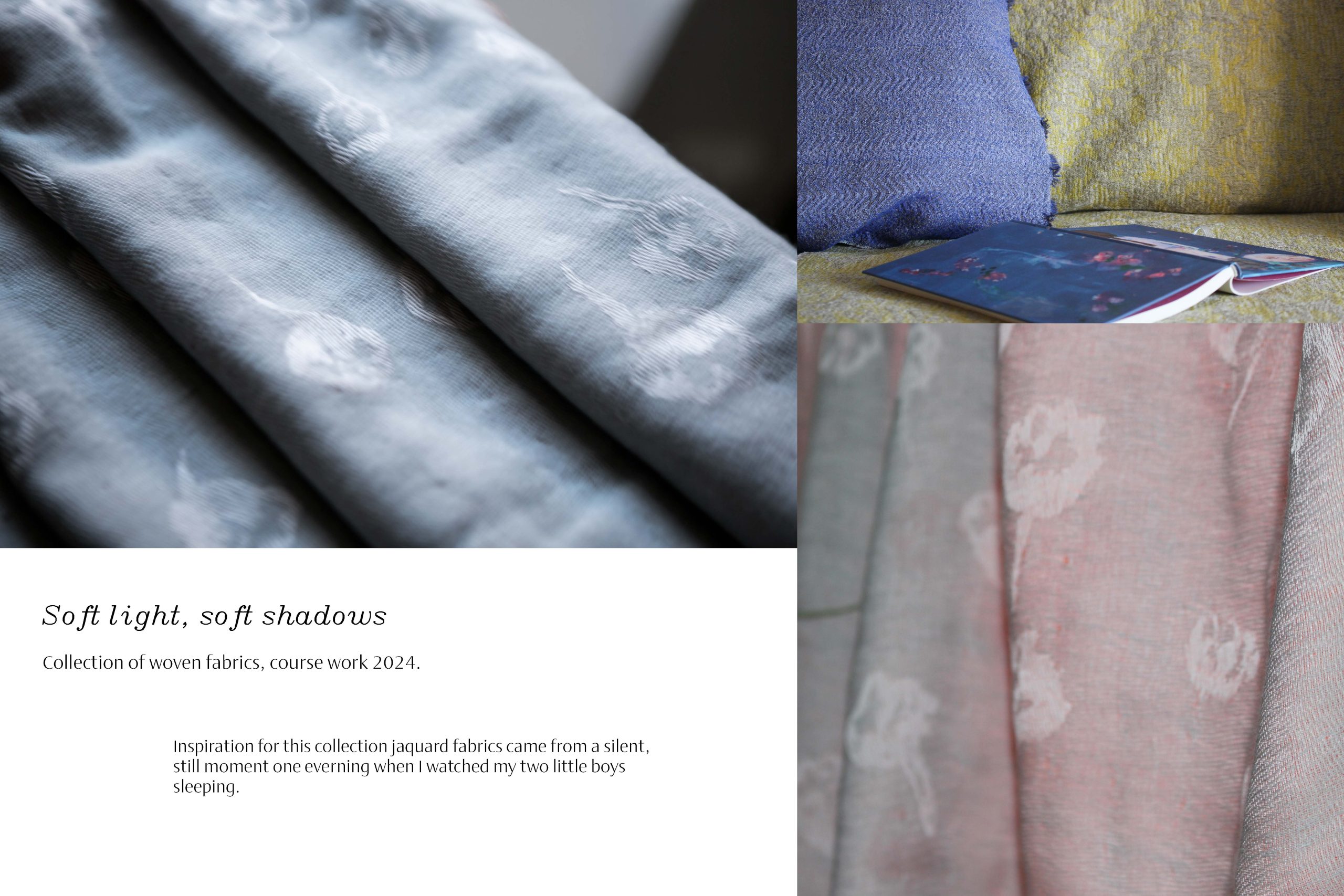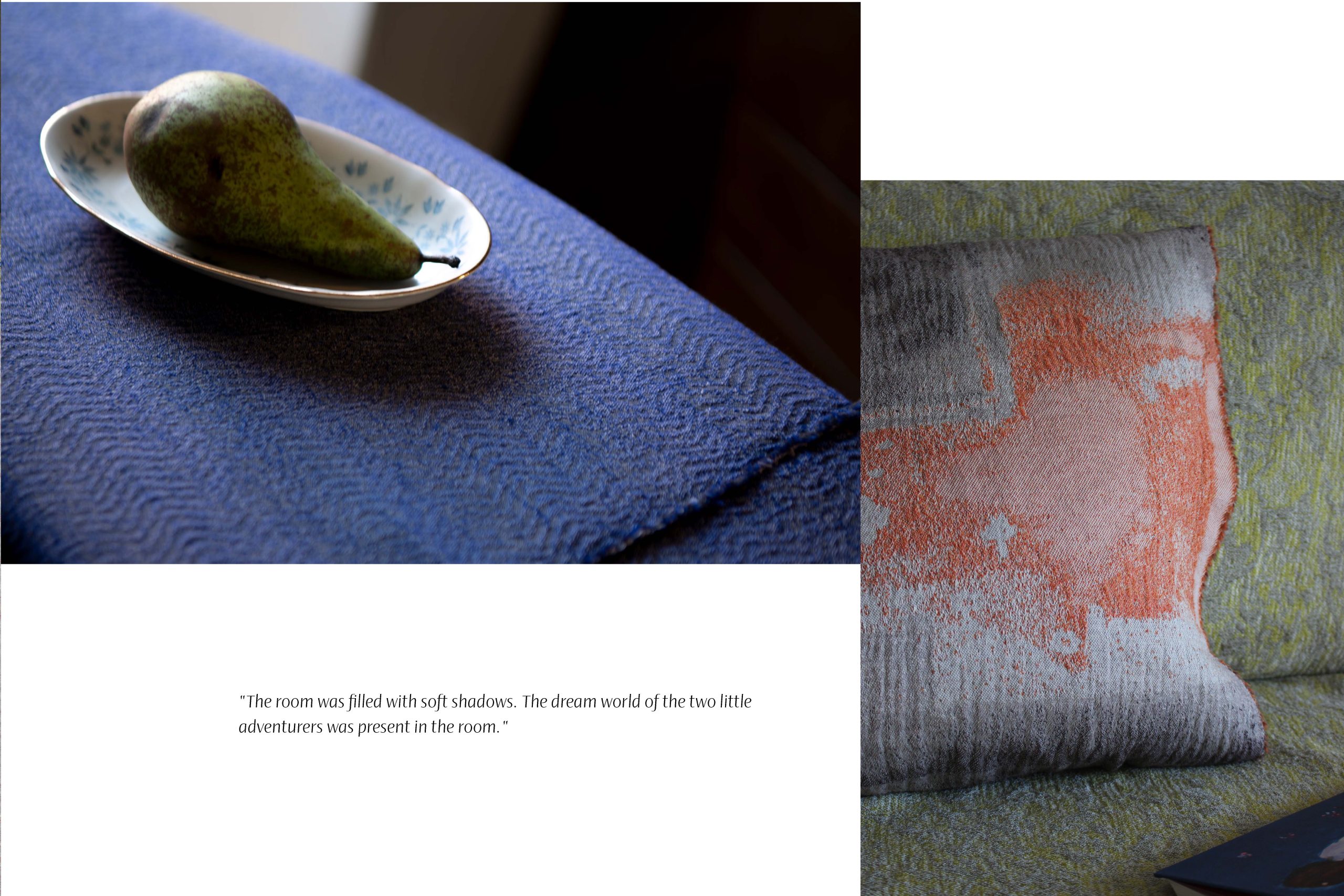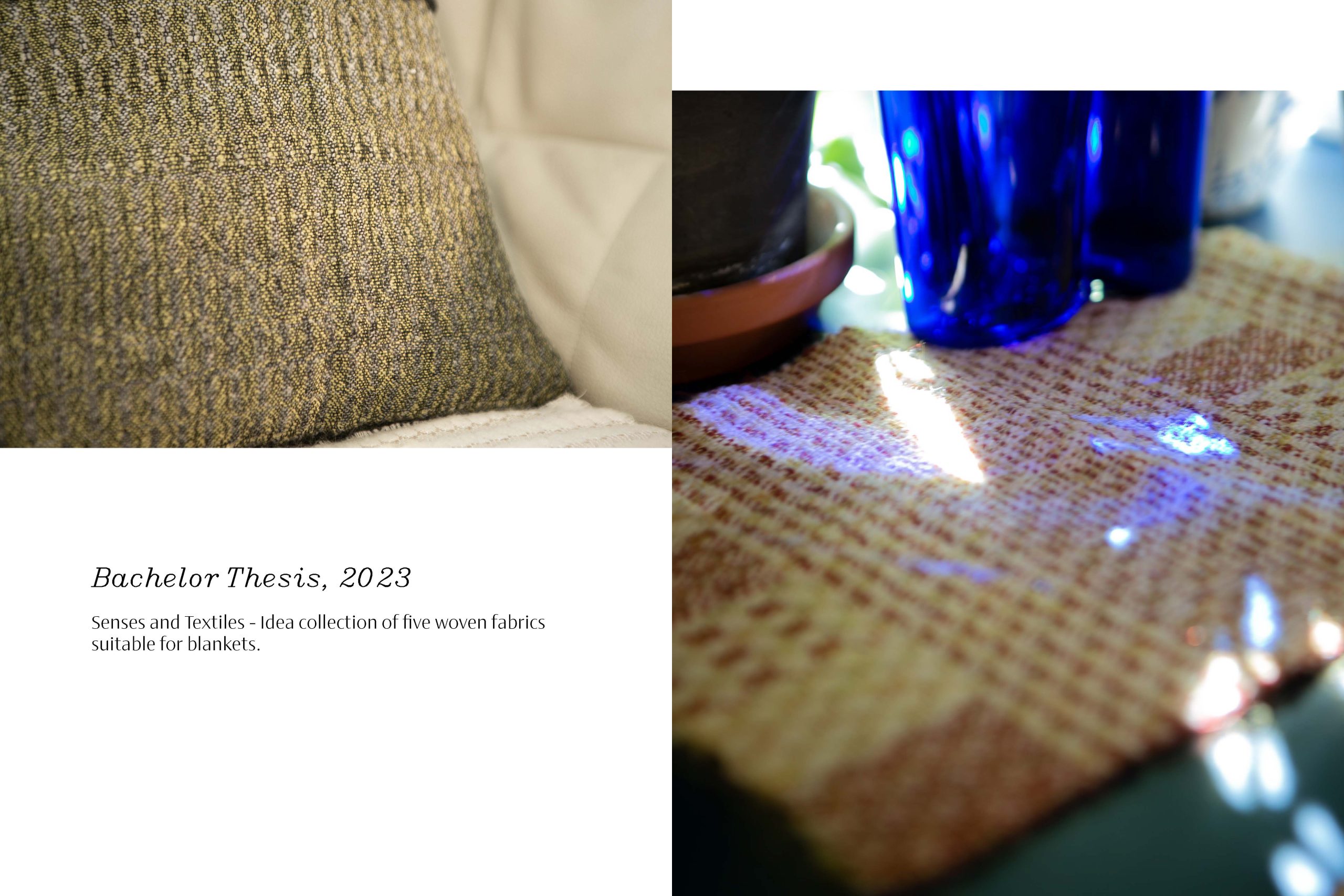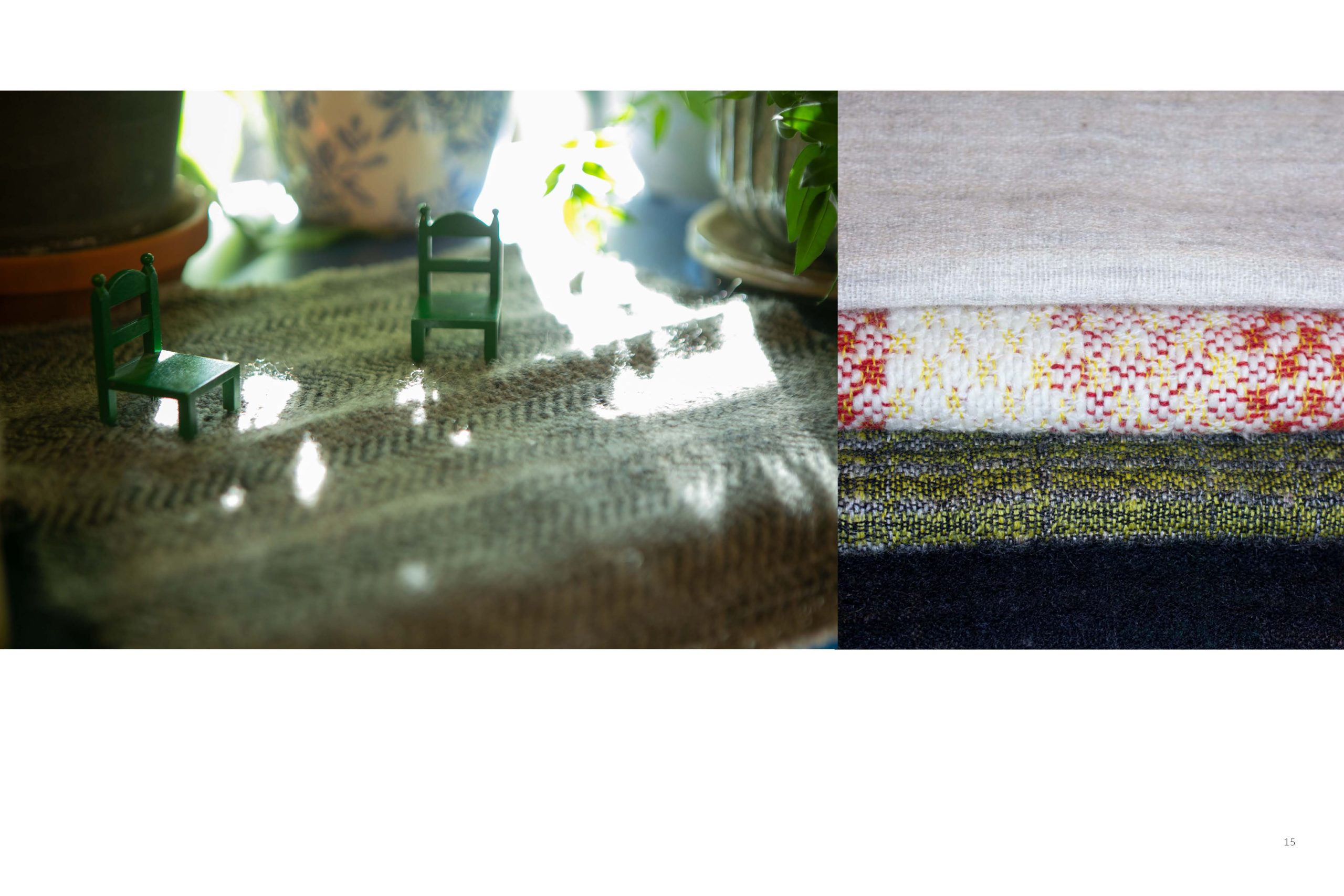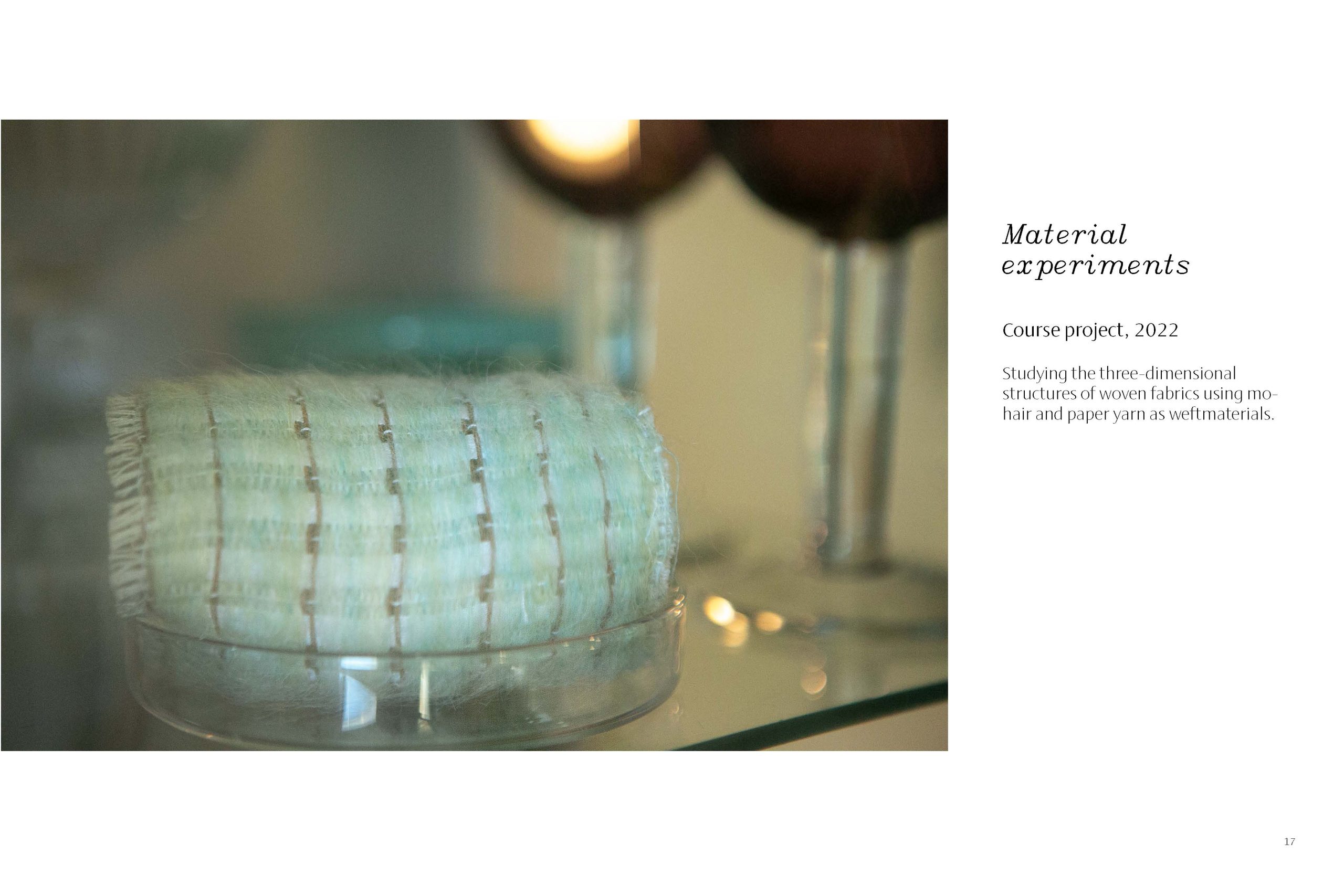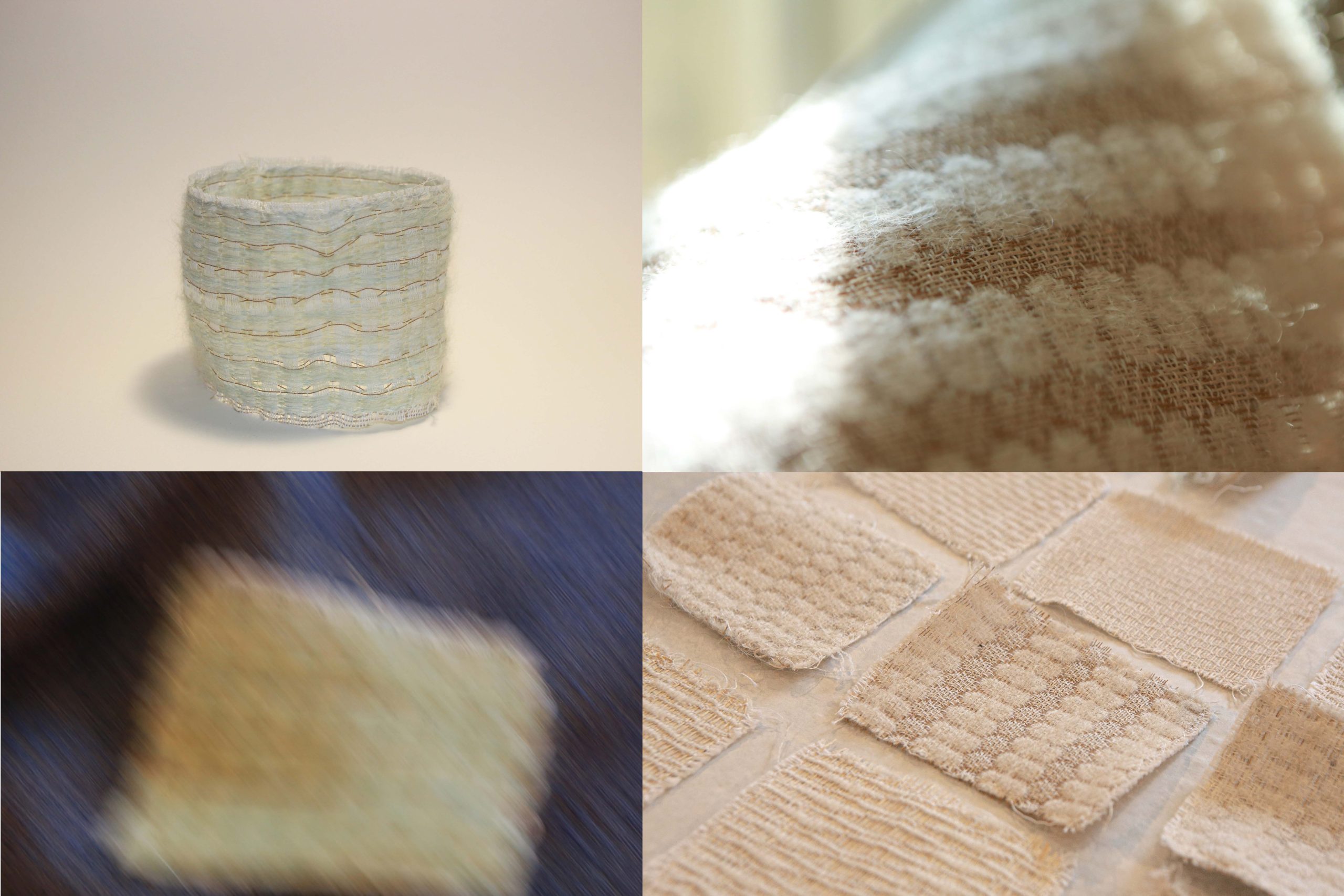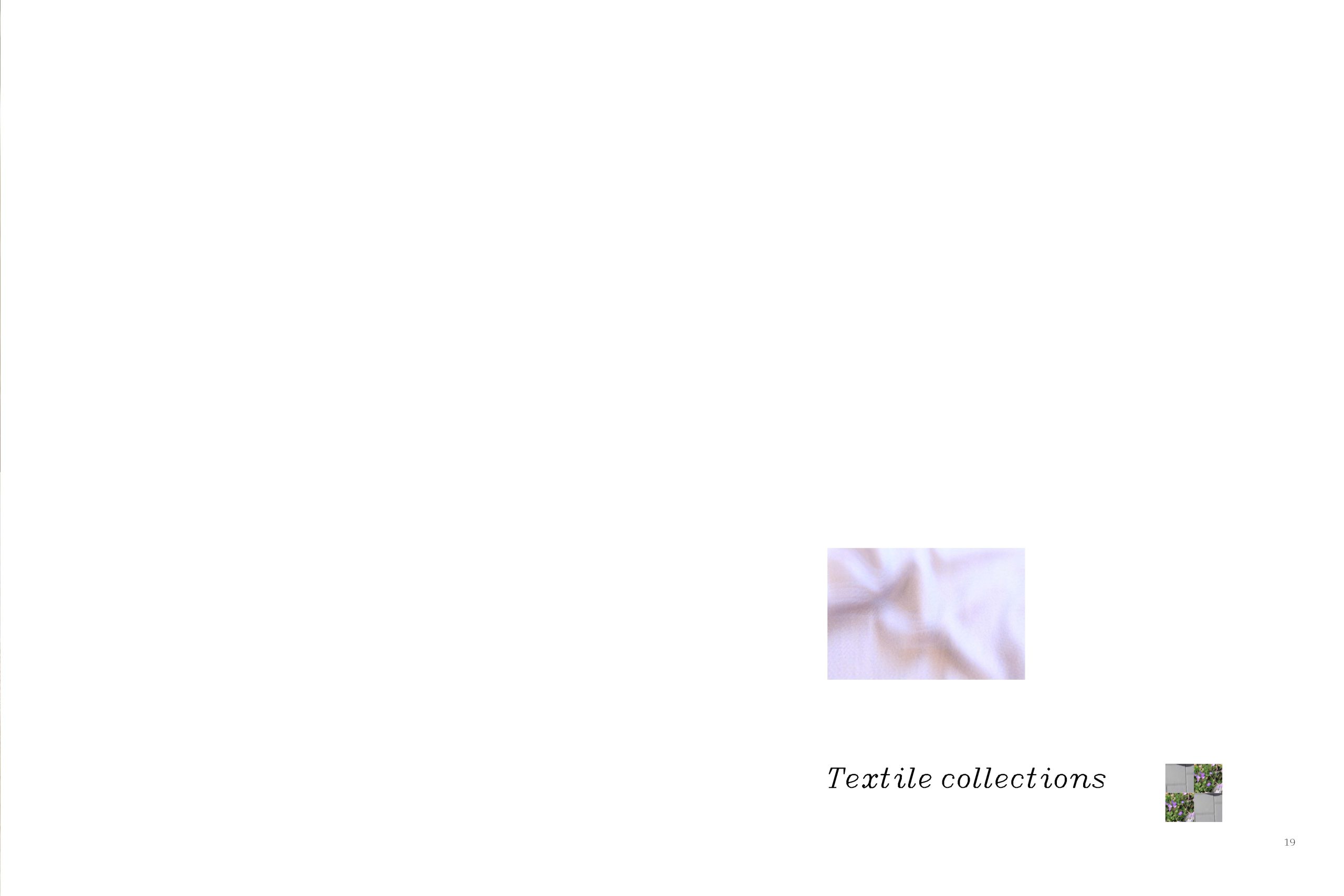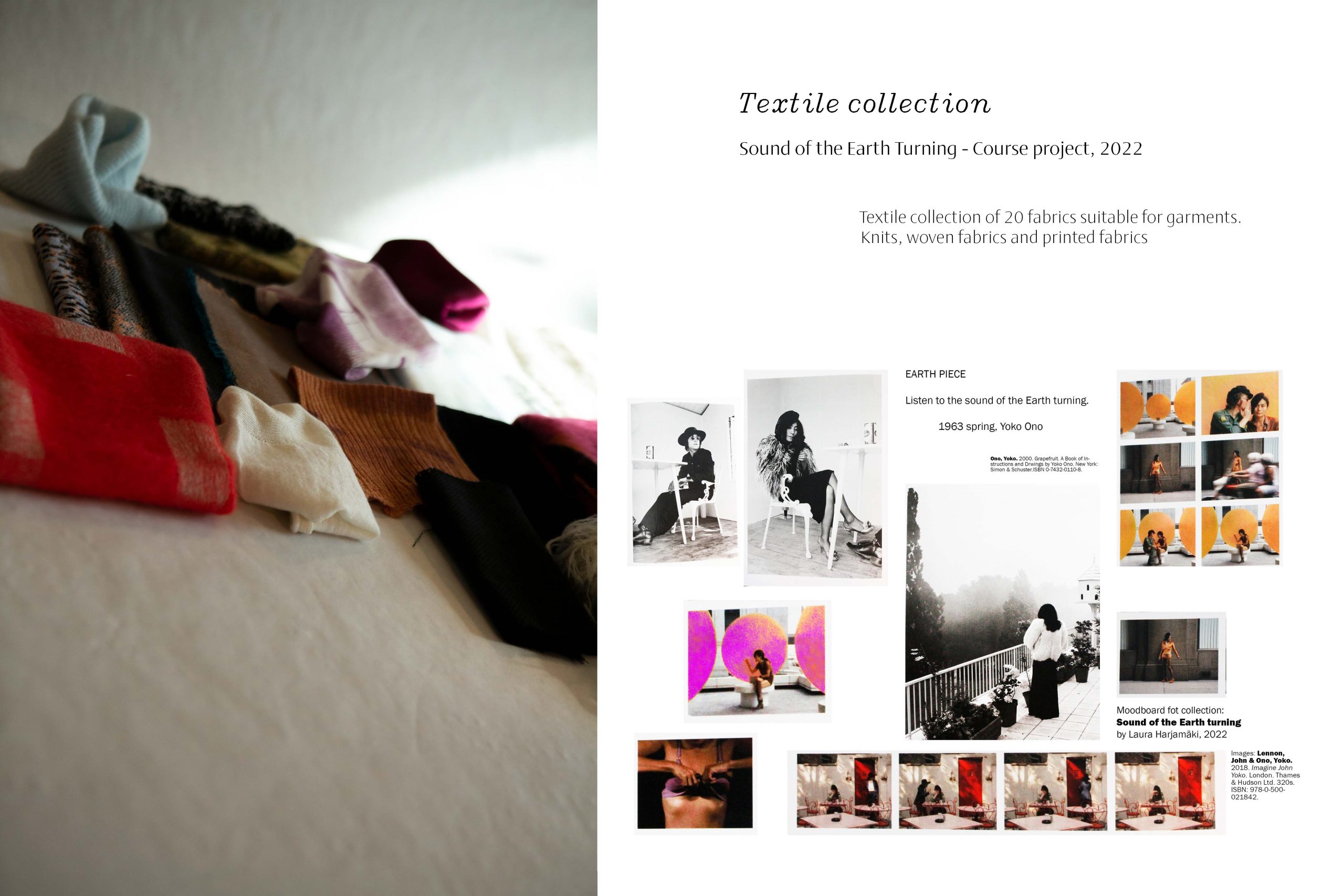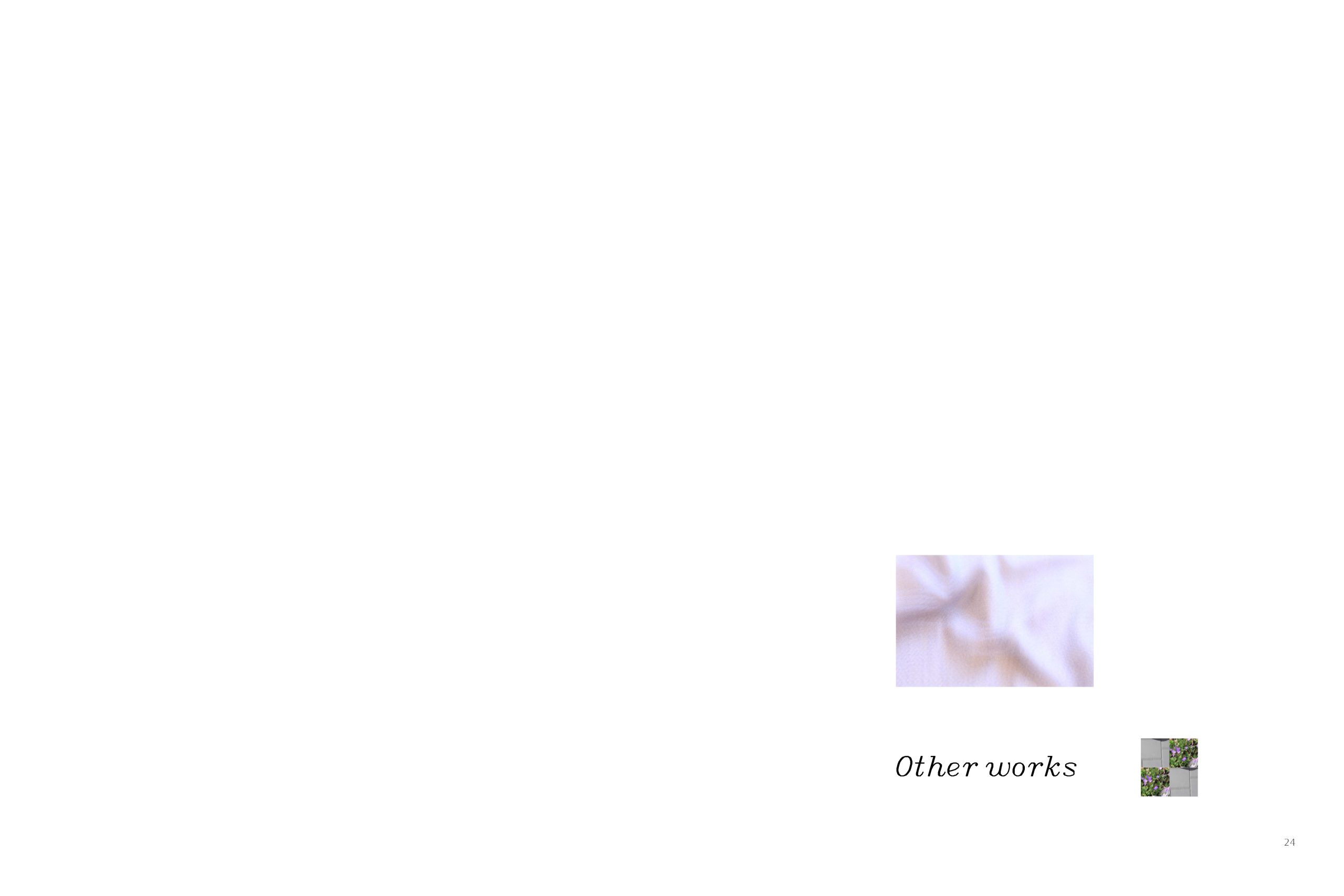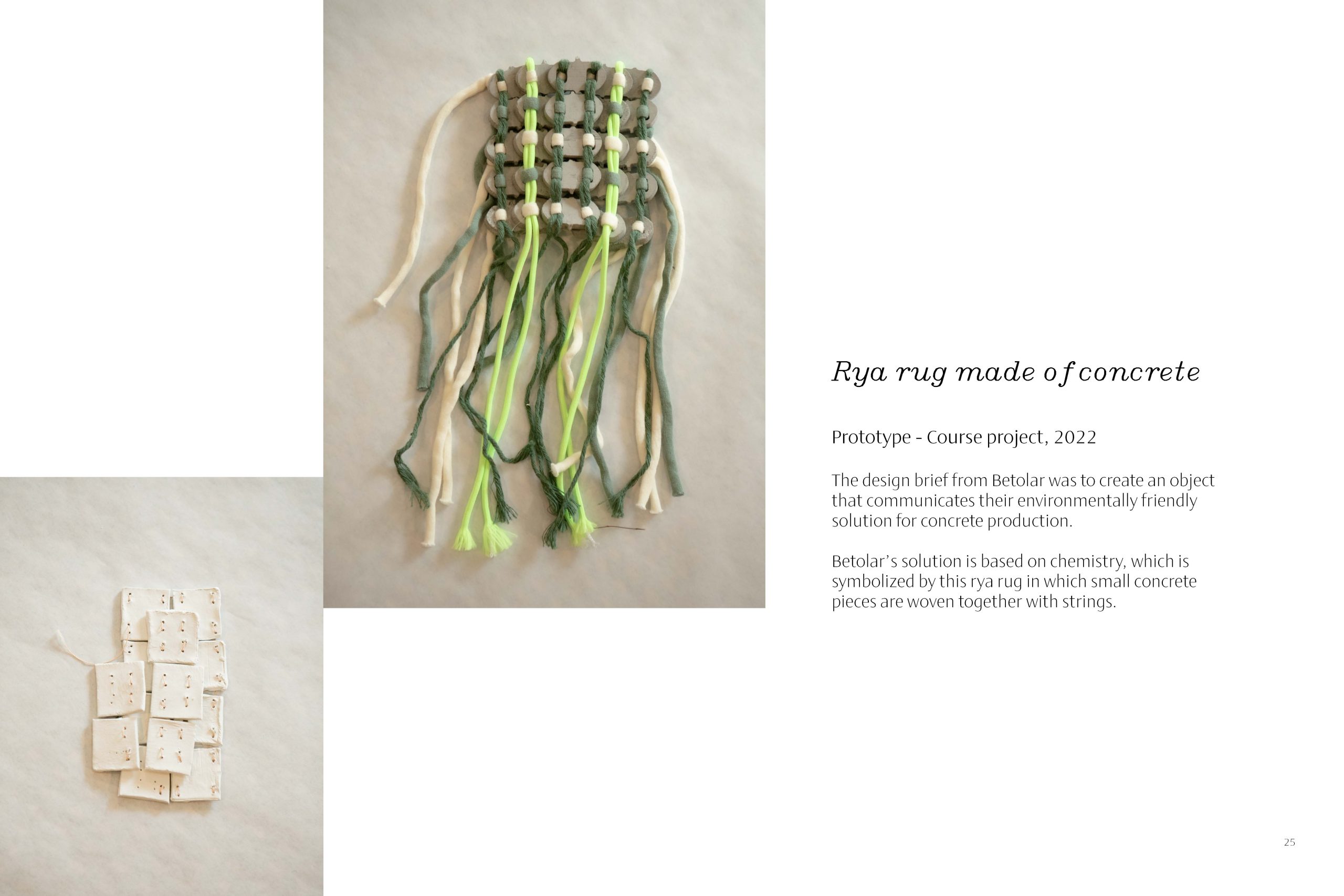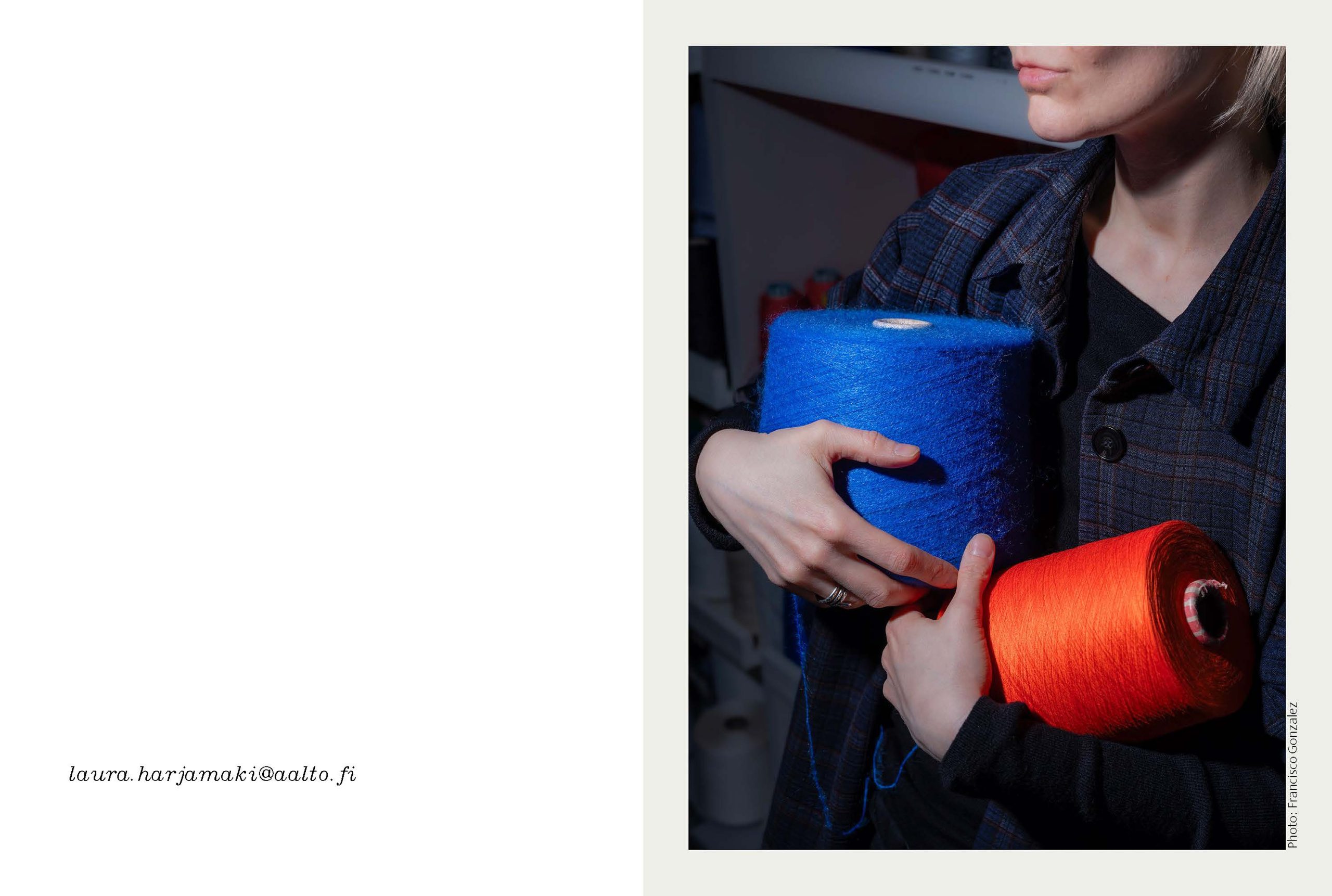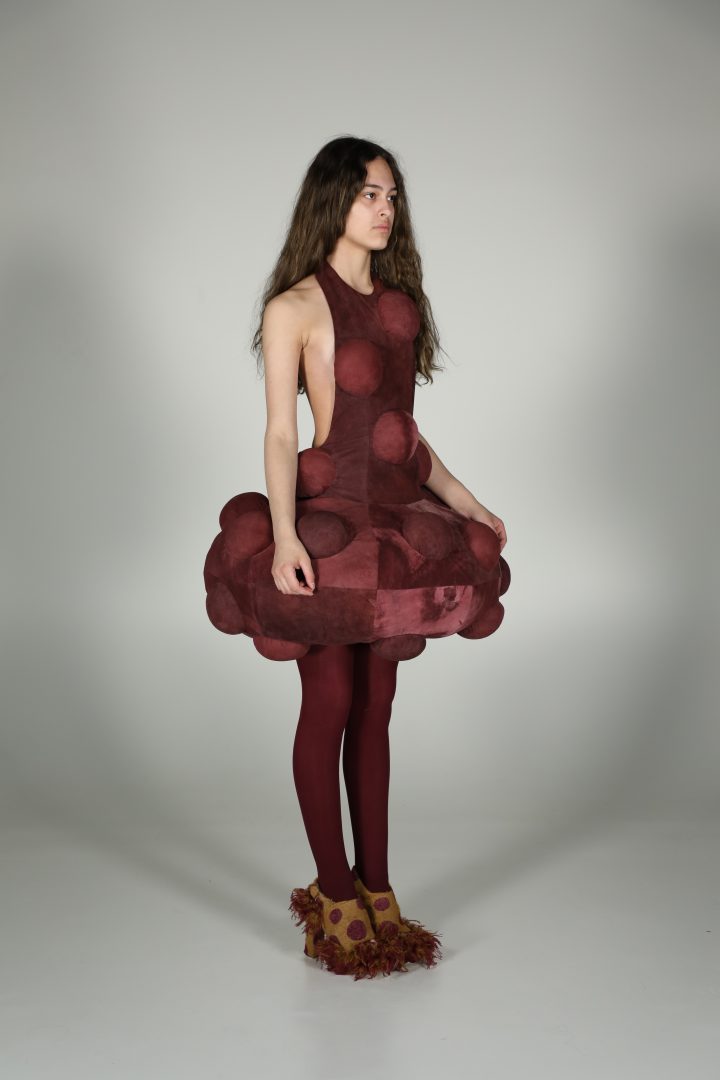Laura Harjamäki
(MA)
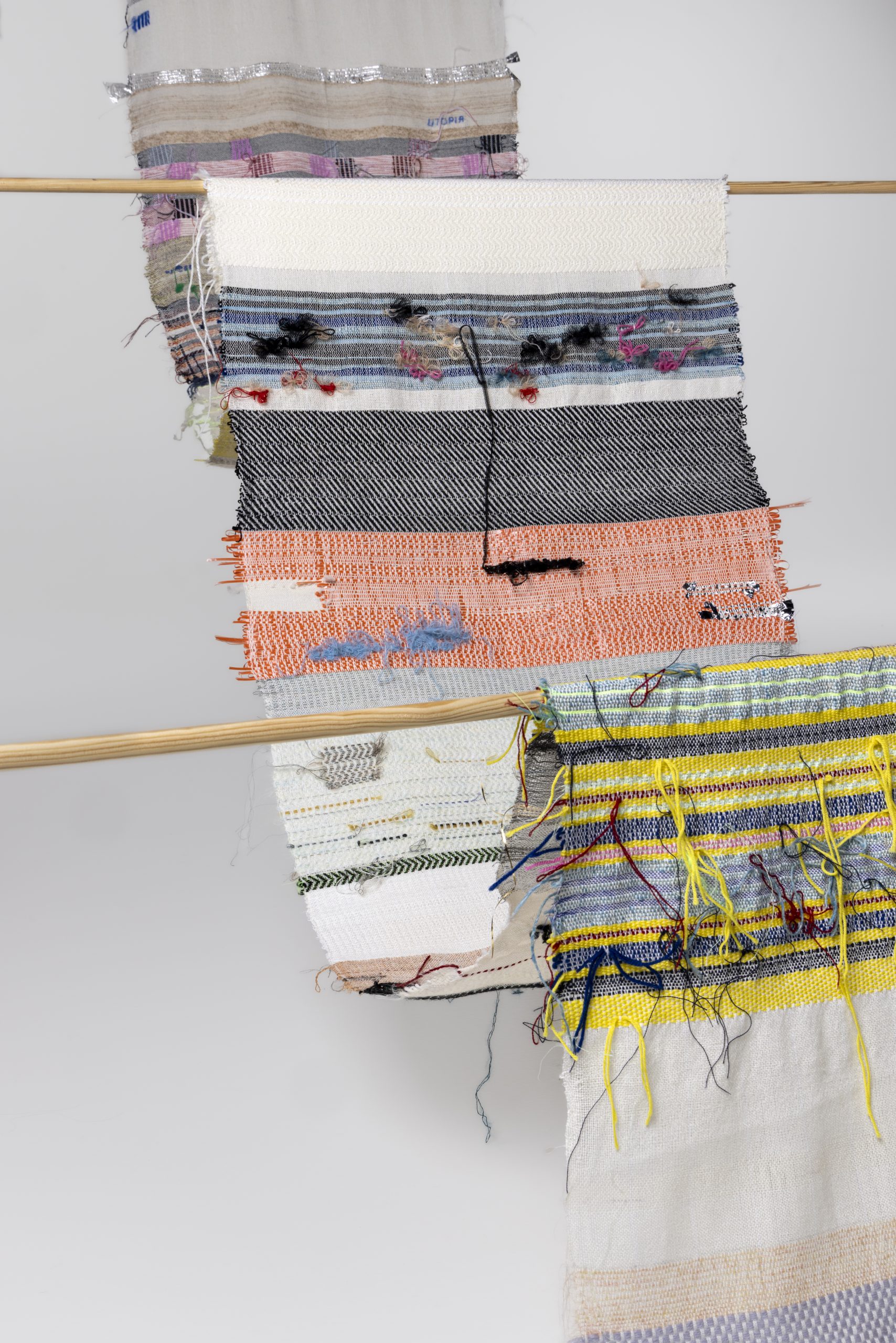
THE WEIGHT OF SOFT
“So wonderfully soft, one might not be enough.”
This slogan appears on the website of a multinational home textiles and furniture manufacturer, promoting blankets made from recycled polyester for €4.99 each. Polyester—a sediment of our time. The textile industry has already produced enough fabrics to serve generations. For the artwork, Laura Harjamäki wove polyester weft into a silk-wool warp. Perhaps we, as designers, can find new value and purpose for these sediments, ensuring that even this €4.99 piece still has a role to play ten years from now.
COLLABORATiON
Photography: Francisco Camacho Gonzalez
ADVISORS
Aino Korhonen, Hanna-Kaisa Korolainen
SUPERVISOR
Kirsi Niinimäki
Laura Harjamäki explores the shifting perception of value in textiles and our relationship with the material world. Harjamäki’s research is grounded in observation, hands-on making, and the design process.
– I started to observe the absurd slogans used to sell textiles and fashion at negligible prices. A new decorative pillow can cost less than two euros. Bought online, based solely on images, these items slip into our everyday lives, pile up and require space and care. Along with the products, we buy lifestyles and identities that accumulate around us like sediments. A polyester sweater that looks fresh online quickly becomes a burden in our wardrobe.
Harjamäki’s research invites us to reconsider our material relationships. How can we engage with textiles in a more sustainable way – and what is the designer’s role in shaping that interaction?
The process of weaving and thinking through textile structures is central to Harjamäki’s work. As part of her practice-led research, she handwove a nearly seven-meter-long, diary-like textile and reflected the process through writing. This slow making also led to a series of industrially woven fabrics. Weaving by hand offered insight into why textiles were once so valued—while showing that returning to slow methods is, in many ways, utopian.
– I wove bright synthetic wefts into a poetic silk-wool warp. It is interesting how different kinds of textiles weave themselves into our everyday lives. As designers, we can help reveal the beauty and value in different kinds of materials — both high- and low-quality — on a deeper, more intimate level. We must truly learn to live with what already exists: to see materials with new eyes, to approach them with practicality, and to find beauty there through creativity.
